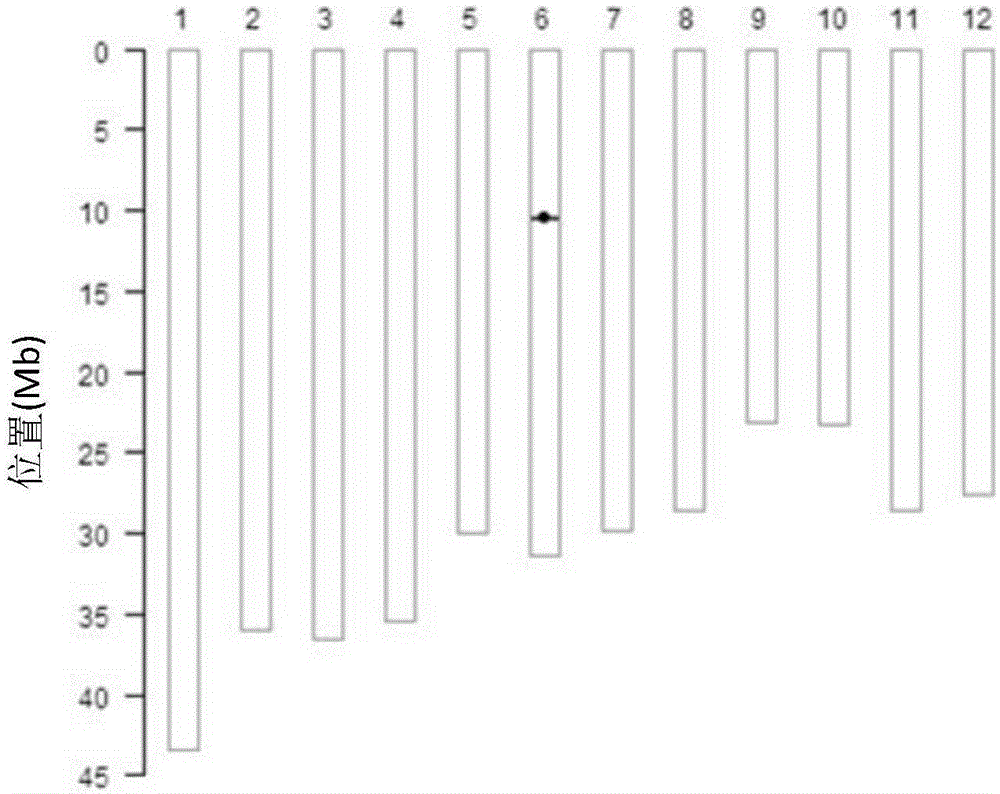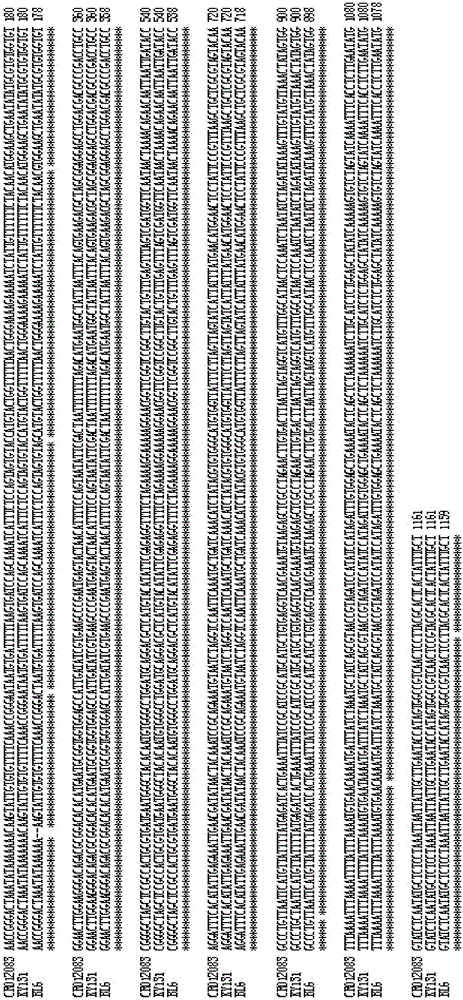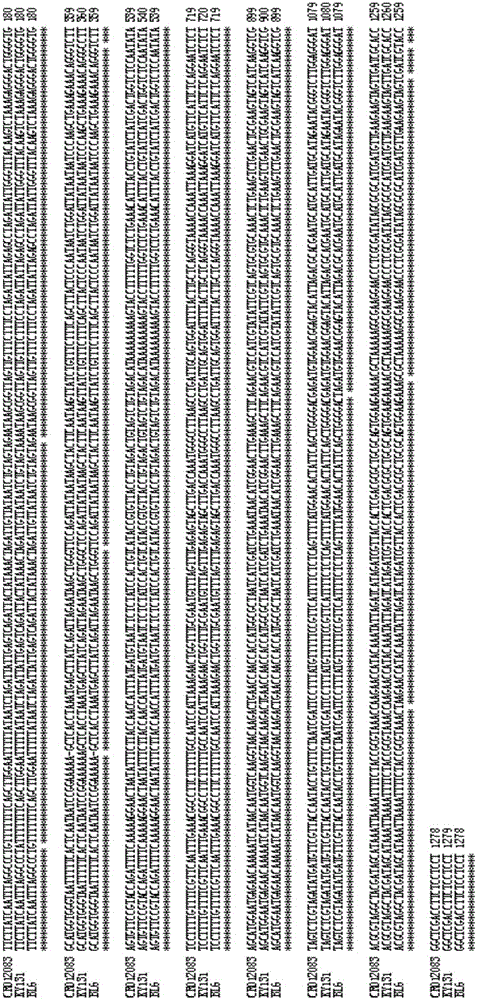Recombinant nucleic acid fragment RecCR012083 and detection method thereof
A technology for recombining nucleic acid and fragments, which is applied in the field of recombining nucleic acid fragments and its detection, can solve the problems of low efficiency and long time consumption, and achieve the effects of stabilizing genetics, speeding up the breeding process, and improving breeding efficiency
- Summary
- Abstract
- Description
- Claims
- Application Information
AI Technical Summary
Problems solved by technology
Method used
Image
Examples
Embodiment 1
[0040] Example 1 Breeding of Recombinant Plants Introduced with Blast Resistance Genome Fragment
[0041] The materials used in this example are rice 'Kongyu 131' and rice 'BL6'.
[0042] Rice 'BL6' has been proved to have good blast resistance, and it is speculated that the gene cluster region where Pi2, Pi9 and Pigm of chromosome 6 are located may play a key role in the rice blast resistance of this material.
[0043] During the breeding process of the recombinant plants, the molecular markers were used to perform prospect selection on the recombinant plants, and the adopted molecular markers for prospect selection were screened. Referring to the rice Nipponbare genome MSU / TIGR annotation version 6.1, download the DNA sequence of chromosome 6 from 9,559,000 to 10,990,000. The SSR sites in the above sequences were scanned using SSRLocator software. Primer Premier 3.0 software was used to design primers for the found SSR loci, and a total of 162 pairs of primers were desi...
Embodiment 2
[0053] Example 2 Determination of Homologous Recombination Fragments After Introducing Blast Resistance Genome Fragments
[0054] In order to determine the size of the imported rice blast resistance genome fragment, the homozygous single plant of the 'Kongyu 131' imported fragment was sequenced for homologous recombination fragments on both sides of the target genome fragment.
[0055] It was preliminarily determined by the rice genome-wide breeding chip RICE60K detection results that RecCR012083 was located between two SNP markers F0610271281GA and R0610407176TC.
[0056] At the same time, three samples of 'Kongyu 131', 'BL6' and CR012083 were subjected to whole-genome sequencing using Miseq sequencing technology. The TruSeq Nano DNA LT Kit (illumina) kit was used for library establishment, the Library Quantification Kit–Universal (KAPA Biosystems) kit was used for quantification, and the MiSeq V2 Reagent Kit (illumina) kit was used for sequencing reactions. Detection was...
Embodiment 3
[0066] Example 3 Resistance Identification of 'Kongyu 131' After Introducing Blast Resistance Genome Fragment
[0067] In order to identify the resistance effect, the new line CR012083 selected by the application, the recurrent parent 'Kongyu 131', the rice blast resistant variety Gumei No. 4 (as a positive control), and the rice blast susceptible variety Lijiang Xintuan Heigu ( As a negative control) for indoor planting, it is cultivated to the 3-4 leaf stage and then identified by the following methods:
[0068]Seven rice blast strains isolated from the diseased leaves and necks of rice blast in Jiamusi disease nursery in Heilongjiang in 2014 were selected as inoculation strains, and the numbers were 14-7301, 14-7302, 14-7303, 14-7305, 14-7309 , 14-7324 and 14-7328. The strain was stored at -20°C by the sorghum grain method. Before use, the preserved sorghum grains were taken out and activated on a potato dextrose medium (PDA) plate (PDA: 200g peeled potatoes, 20g glucos...
PUM
| Property | Measurement | Unit |
|---|---|---|
| Diameter | aaaaa | aaaaa |
Abstract
Description
Claims
Application Information
 Login to View More
Login to View More - R&D
- Intellectual Property
- Life Sciences
- Materials
- Tech Scout
- Unparalleled Data Quality
- Higher Quality Content
- 60% Fewer Hallucinations
Browse by: Latest US Patents, China's latest patents, Technical Efficacy Thesaurus, Application Domain, Technology Topic, Popular Technical Reports.
© 2025 PatSnap. All rights reserved.Legal|Privacy policy|Modern Slavery Act Transparency Statement|Sitemap|About US| Contact US: help@patsnap.com



